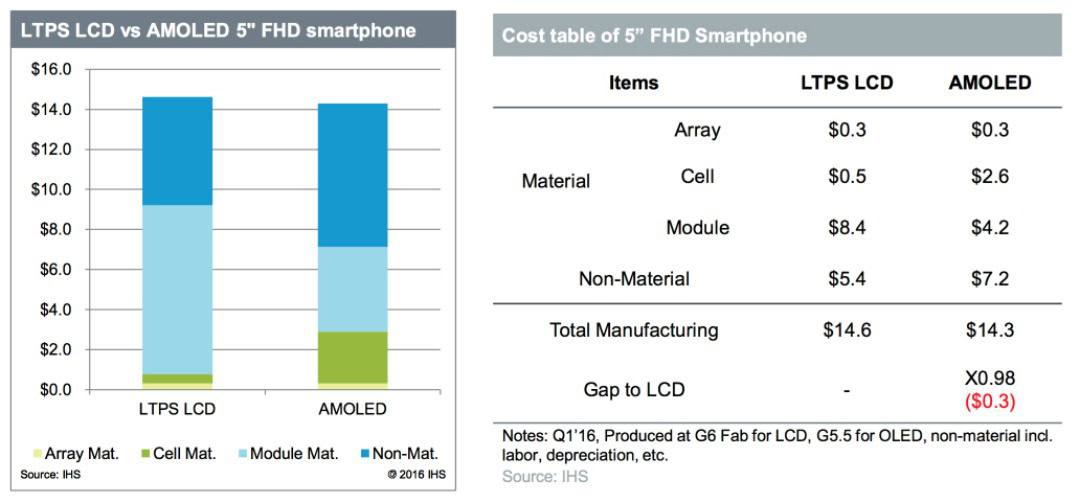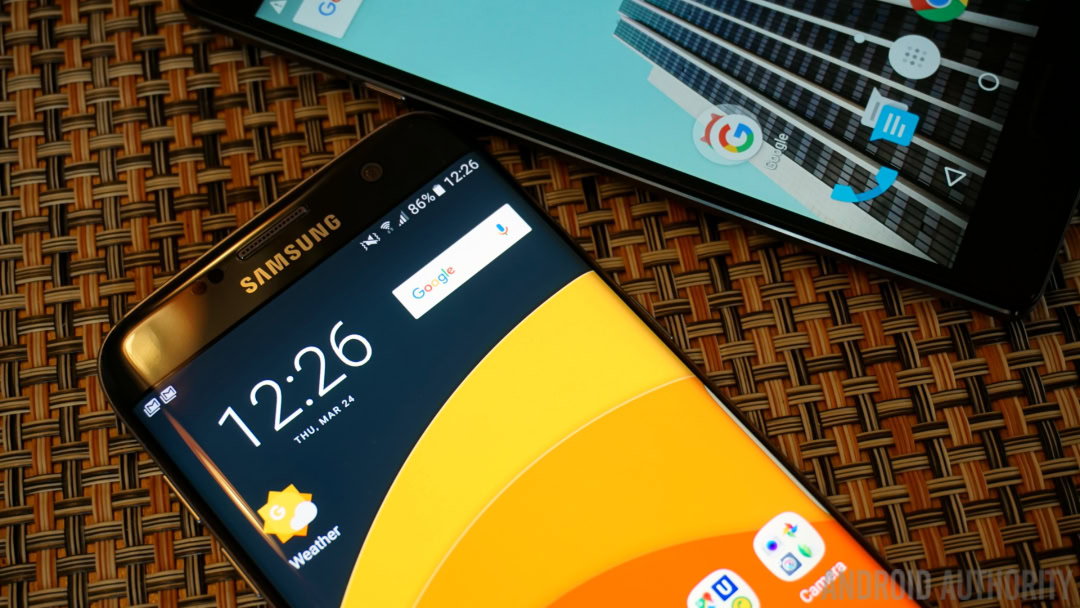Affiliate links on Android Authority may earn us a commission. Learn more.
Higher resolution AMOLED displays are still expected to cost more than LCD
Published onMarch 25, 2016

Following up on the story out of South Korea this week that AMOLED displays are now cheaper to produce than their LCD counterparts, I spoke with Jimmy Kim, principal analyst at IHS Technology, who originally presented the manufacturing cost information at the Korea Display Conference in Seoul. As it turns out, there’s more to the story than initial reports suggest.

In case you missed the previous story, IHS presented data at the conference that showed the manufacturing costs for a 5-inch Full HD AMOLED display are now cheaper than their equivalent LCD counterpart. The cost discrepancy is small, with just 30 cents separating the two display types, but this is the first time that AMOLED panels have been cheaper to make than LCD.

I asked Kim if the figures held true for higher resolution displays as well, and he told me that “regarding high resolution like QHD (there is no 4K AMOLED smartphone yet), LCD is still expected to show lower costs than AMOLED.” So while 5-inch AMOLED panels at Full HD definition may be cheaper, the trend doesn’t hold true across the full spectrum of screen resolutions.
When I asked if there was a possibility that an equivalent price drop in LCD production could reverse the situation, Kim said “the cost gap is very narrow and may be inverted in the near future”. So the war is far from won. Kim also pointed out that the figures presented during the display conference were based on IHS simulation results.

For reference, the manufacture cost in Q4, 2015 for an AMOLED panel was $17.10 compared to $15.70 for LCD. In the first quarter of 2016 the projected costs dropped to $14.30 for an AMOLED display and $14.60 for an LCD screen.
So while we may well start seeing more AMOLED displays in mid-range devices (because they tend to have smaller screens and lower resolutions than flagships), LCD will remain competitive at higher resolutions. And, as Kim noted, an equivalent shift in manufacturing costs could just as easily see LCD make a comeback.
Which display type do you prefer? For what reasons?